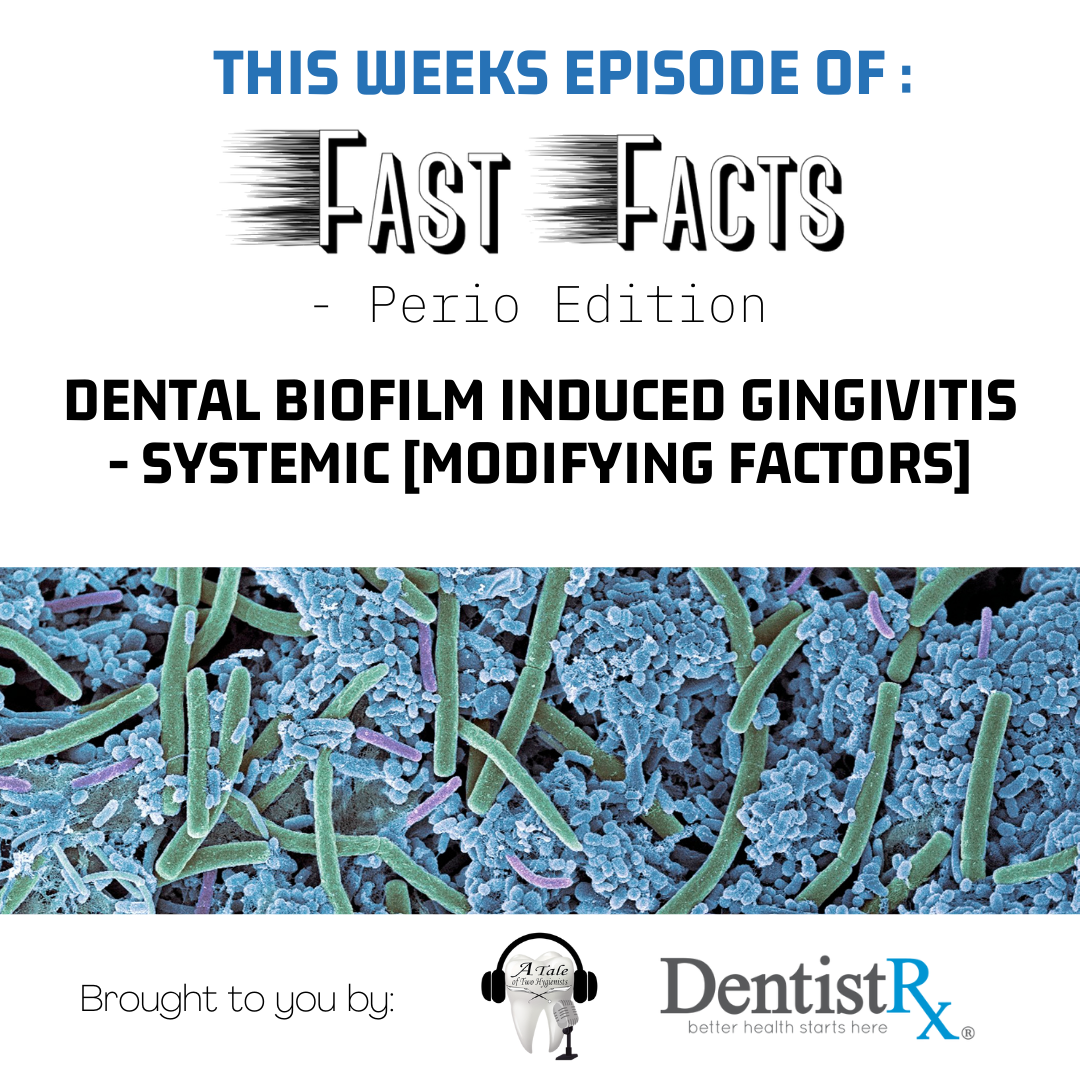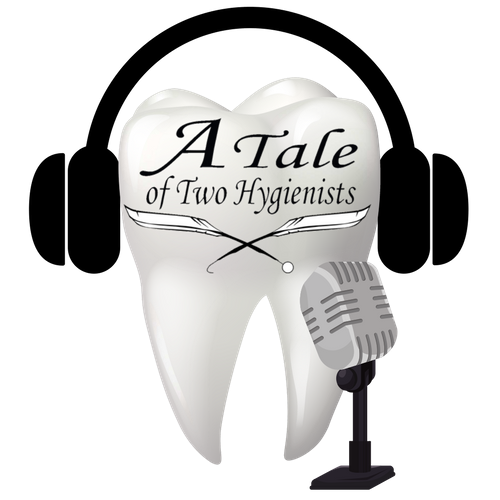
Fast Facts: Perio Edition Episode 39
[Andrew Johnston, RDH]
Welcome back everyone! You are listening to another episode of Fast Facts- Perio Edition brought to you by A Tale of Two Hygienists in partnership with DentistRX. And now, please welcome your host, Katrina Sanders.
[Katrina Sanders, RDH]
Hello and welcome to Fast Facts: Perio Edition. On this week's episode, we continue the dialog about the AAP classification system and more specifically, dental biofilm induced gingivitis. This week we are looking at systemic or modifying factors for patients that present with dental biofilm induced gingivitis. And I want to be clear. These are patients that will present with biofilm. They absolutely do present with plaque induced gingivitis. However, there is some type of a systemic condition, an oral factor or some type of a drug influence that is also creating challenges or enlargements.
So to begin, we're going to take a look at systemic conditions. And more specifically, these could be patients, for example, that present with higher concentrations of sex steroid hormones. These could be patients, for example, that are adolescents or present with puberty-induced gingivitis. We understand, for example, that the incidence and severity of gingivitis for our adolescent population can be influenced by biofilm levels, the presence of decay, mouth breathing, crowding or even the presence of tooth eruption. But what we're really talking about is the fact that in addition, these individuals present with a dramatic rise in their sex steroid hormone levels during puberty. In addition, we've found that individuals who are currently presenting in the dental chair during their menstrual cycle also present with significant or observational inflammatory changes to the gingiva. These absolutely can be women that are either experiencing this inflammation during the menstrual cycle itself or during ovulation. We, of course, can also see the prevalence and severity of gingivitis noted in our pregnant patients, where those pregnant women and even in some cases postpartum patients can experience pregnancy associated gingivitis.
And finally, we look at patients that present with medication for contraception, namely patients that take over-the-counter birth control pills. These are going to be patients that will present with some type of a gingival inflammation in many cases due to the concentration of sex steroid hormones. We can also have patients that present with plaque-induced gingivitis exacerbated by systemic conditions. These could be patients that, for example, have hypoglycemia oftentimes seen in uncontrolled Type One diabetics. These could also be patients that present with leukemia, acute leukemia conditions. We can see various changes in the inflammatory process, swollen, glazed or spongy tissues with anywhere between a red to a deep purple appearance often times seen in leukemia cases. This could be tobacco users. We understand, of course, that smoking is a lifestyle related risk factor that can certainly elevate localized and systemic conditions. And these could also be patients that present with malnutrition. So these could be patients that have some type of a nutritional deficiency associated with periodontal inflammatory conditions. We can also see various types of oral factors like hyposalivation. Patients that present with xerostomia absolutely can present with inflammatory conditions, specifically noted in patients that are taking antihistamines, decongestants, antidepressants or antihypertensive medications. And speaking of medications, we also can observe in some cases that patients taking certain types of medications can experience gingival enlargement. And remember that enlargement is due to a combination of the medication as well as the presence of biofilm. These medications have been reported to affect the size of these gingival tissues. These could be medications, for example, like antiepileptic drugs, phenytoin, for example, or certain calcium channel blockers, as well as various types of cyclosporine and high dose oral contraceptives. These drug influenced conditions are due to a response, a combination of the drug as well as biofilm, together. And so notating these types of enlargements is important because part of our treatment plan modality will be absolutely addressing the presence of biofilm. Yet in some other cases, some of this may be working to control some of the systemic factors that are exacerbating the challenges associated with this inflammatory condition.
Thank you for tuning in this week as we looked at dental biofilm induced gingivitis for our systemic patients. Stay tuned as we continue the conversation about gingivitis next week. Have a wonderful week.
This has been another episode of Fast Facts - Perio Edition with Katrina Sanders, RDH. Please feel free to reach me on Instagram @thedentalwinegenist or on my website www.KatrinaSanders.com Cheers.
[Andrew Johnston, RDH]
Thank you for listening to another episode of Fast Facts - Perio Edition, brought to you in part by DentistRX makers of the InteliSonic line of power brushes. Find out more by visiting their website at www.dentistrx.com. We'll see you next week for another Fast Fact!
